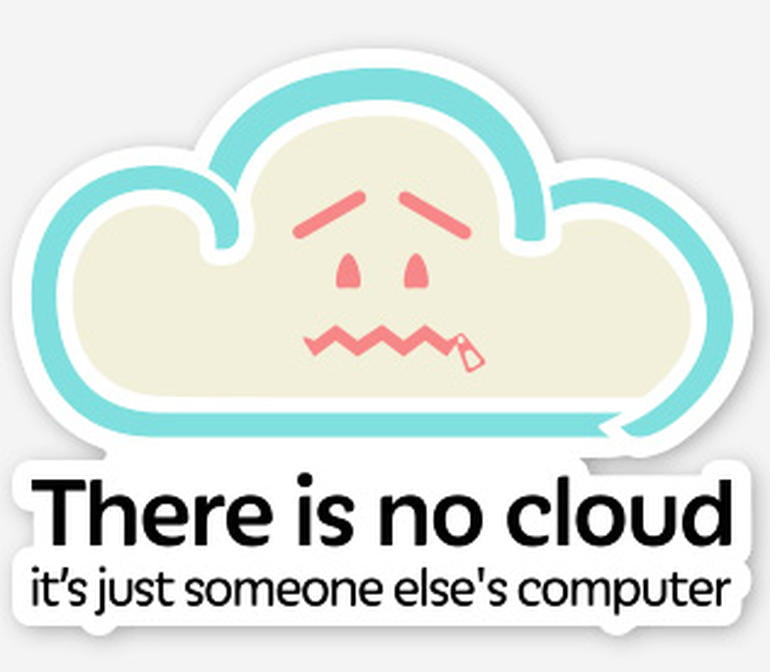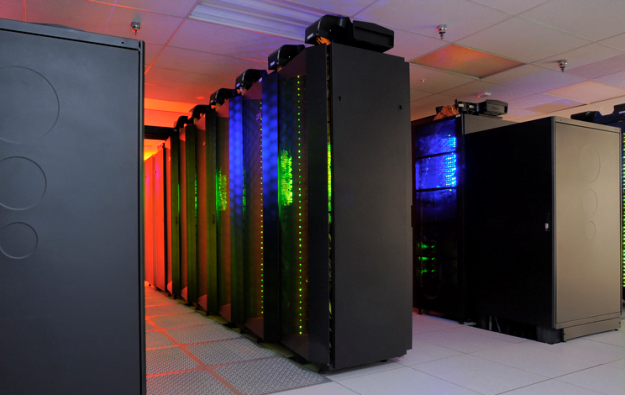

Lately I’ve seen a lot of tech memes stating that the cloud is nothing more than someone else’s computer. I get where that sentiment is coming from.
People see the cloud as just a place for saving files (and not much more) on a remote machine, owned by someone else. At one point, that may have been the case. We were saving our files to Dropbox, Google Drive, and other “cloud” services, and it seemed those services really were nothing more than glorified servers.
However, the cloud has greatly evolved to the point that sentiment is dead wrong.
SEE: Cloud Computing Policy (Tech Pro Research)
A brief history of the cloud
The idea of the cloud has been around for a long time. It has only been within the last 10 years or so that it has worked its way into the lexicon of the masses, such that it has become its own “thing.”
The idea of the cloud can be traced back to thin clients or “dumb terminals” from way back in the 1970s. The idea behind a dumb terminal was simple: You have a piece of physical hardware that required the use of a remote system for computational services. The terminal was a means for you to access the power of another, more powerful machine.
You could slightly stretch the definition to include the Z3 computer, designed by Konrad Zuse. But it wasn’t until the internet reached speeds sufficient enough to make remote storage a viable option that the cloud finally became a household name.
SEE: Tech history in photos: Cloud computing pioneers (TechRepublic)
The Chromebook
The Chromebook—even more so than the smartphone—changed the cloud landscape. Now we have a laptop that functions as a dumb terminal on steroids. These machines contain more than enough computing power to function, but rely on remote software and storage to work with data and files. Chromebooks offer plenty of power and just enough storage so they can function offline, but the idea was for them to depend upon that online connection.
SEE: Chromebooks: The smart person’s guide (TechRepublic)
The Chromebook also serves as a perfect illustration as to why the cloud isn’t just “someone else’s” computer. The Chromebook’s take on the cloud is an ideal combination of storage and software.
Although Google has made it possible to install Android apps on certain Chromebooks (they mimic a standard computer), the standard Chromebook works seamlessly with Google applications, such as Docs, Gmail, and Calendar, blurring the line between computer and cloud. Google also offers hardware that automatically stores files/data on remote storage facilities; plus, that hardware depends upon the offered remote services in order to fully function.
NIST defines the cloud
The National Institute of Standards and Technology (NIST) offers the following characteristics of the cloud.
- On-demand self-service: The ability for an end user to sign up and receive services without the long delays that have characterized traditional IT.
- Broad network access: The ability to access the service via standard platforms (desktop, laptop, mobile, etc.).
- Resource pooling: Resources are pooled across multiple customers.
- Rapid elasticity: Capability can scale to cope with demand peaks.
- Measured service: Billing is metered and delivered as a utility service.
Clearly, the cloud is much more than just someone else’s computer.
SEE: Predictions 2017: Three reasons businesses can’t ignore the rapidly growing cloud market (ZDNet)
The cloud stack
From an IT perspective, the cloud stack contains three major pieces: SaaS, IaaS, and PaaS.
- Software as a Service (SaaS): Software that is deployed over the internet.
- Infrastructure as a Service (IaaS): A way of delivering cloud computing infrastructure (servers, storage, network, and operating systems) as an on-demand service.
- Platform as a Service (PaaS): A computing platform that allows the creation of web applications quickly and easily.
SEE: You can run the same programs on 16 different OpenStack clouds (ZDNet)
Are you seeing a pattern?
The people that half-jokingly proclaim the cloud is just “someone else’s computer” forget or do not understand that same computer, belonging to someone else, not only offers the physical machine in which to house their files, but it offers the underlying services that make it possible to save their files remotely; it reliably serves up software to them so their data can be manipulated and saved; and it makes it possible for developers to rapidly and easily roll out new and improved applications.
The cloud is much more complex than that especially when you factor in virtualization. But the truth is, the cloud has become one of the most important pieces of the technology puzzle, without which we’d find ourselves working with far less efficiency and agility.
To answer the question
So when anyone approaches you with the question “Is the cloud just someone else’s computer?” the answer should be a resounding “no.” The cloud is a complex system of interconnecting parts that come together to make our lives easier, more efficient, and far more capable. Someone else’s computer could never pull off that level of service.
[Source:-TECH REPUBLIC]





